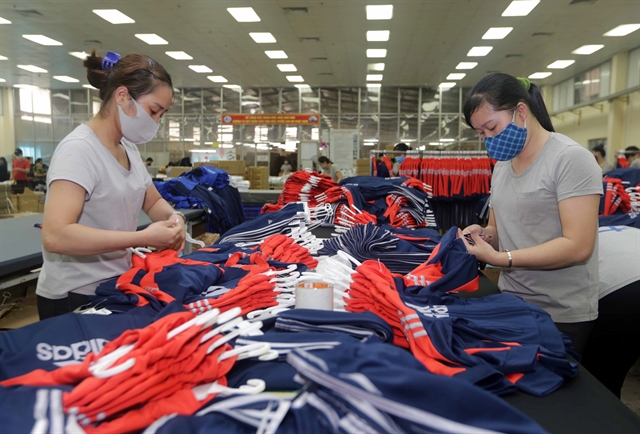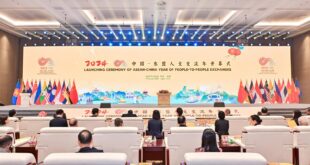
HÀ NỘI — While textiles is one of the key industries in Việt Nam with high export revenue, it is also among industries that pose a high environmental and social risk, according to Nguyễn Quốc Hùng, general secretary of Việt Nam Bankers Association.
He was speaking at a seminar on risk assessment and credit extension to textiles on Wednesday.
Hùng said textiles have been affecting water resources and contributing to greenhouse gas emissions as textile production consumes massive amounts of water and energy.
For this reason, the industry has always been under careful assessments of environmental risk by credit institutions during the credit extension process.
To reduce the impact of industrial production on the environment, institutions have granted credit with preferential terms to clients who embark on projects supporting green growth.
By November 2021, 67 credit institutions have been engaged in “green credit”. Total credit to green projects accounted for over 4 per cent of domestic credit, up 0.46 per cent compared to 2020.
Meanwhile, credit to textiles stood at just VNĐ145 trillion (US$6.39 billion), equivalent to approximately 1.5 per cent of domestic credit.
The general secretary urged textile firms to embrace green growth and strictly comply with green regulations on production in order to become more appealing to bank credit, notably green credit.
Hoàng Thị Thanh Nga, head of textile group World Wide Fund For Nature, said a greener industry is crucial to Việt Nam as the country would not be eligible for tariff reduction/exemption under free trade agreements (FTAs) unless it meets the FTAs’ requirements for environmental protection.
Additionally, the Vietnamese government has been tightening regulations on water, energy, and chemicals to observe international agreements on climate change and improve water and energy security. That means the environmental impacts of textile projects will be assessed more closely by local authorities before any investment permit could be granted. Accordingly, green growth should be factored in textile production.
Another reason for green textiles is that more and more foreign partners are committed to sustainable development goals and raising the bar for their supply chains in terms of the environment. If Vietnamese textiles do not follow suit, its partners would find their supply elsewhere.
Traditional competitive advantages that Việt Nam always takes for granted, including low price and low requirements for FDI, are no longer making any difference. To hold ground in the international market, the country should create new competitive advantages by shifting focus to sustainable production, Nga added.
Textiles normally take up a low proportion in banks’ investment portfolio. Credit to the industry always pales in comparison with credit to the real estate or energy industry. Therefore, textiles firms are strongly advised to turn greener to be able to tap into the “green credit” offered by the banking sector. — VnExpress News
- Reduce Hair Loss with PURA D’OR Gold Label Shampoo
- Castor Oil Has Made a “Huge” Difference With Hair and Brow Growth
- Excessive hair loss in men: Signs of illness that cannot be subjective
- Dịch Vụ SEO Website ở Los Angeles, CA: đưa trang web doanh nghiệp bạn lên top Google
- Nails Salon Sierra Madre
 VnExpress News The News Gateway of Vietnam
VnExpress News The News Gateway of Vietnam




